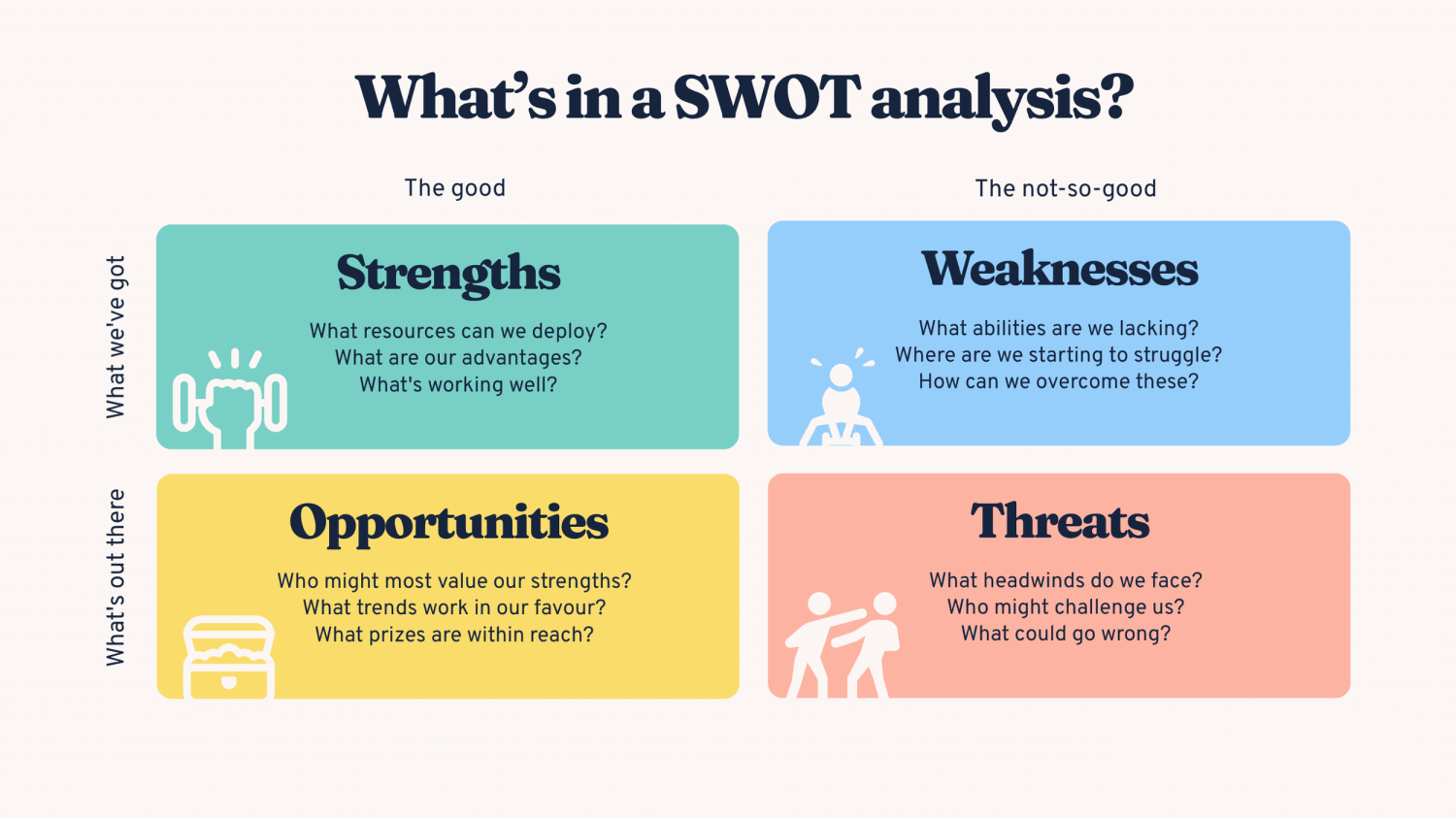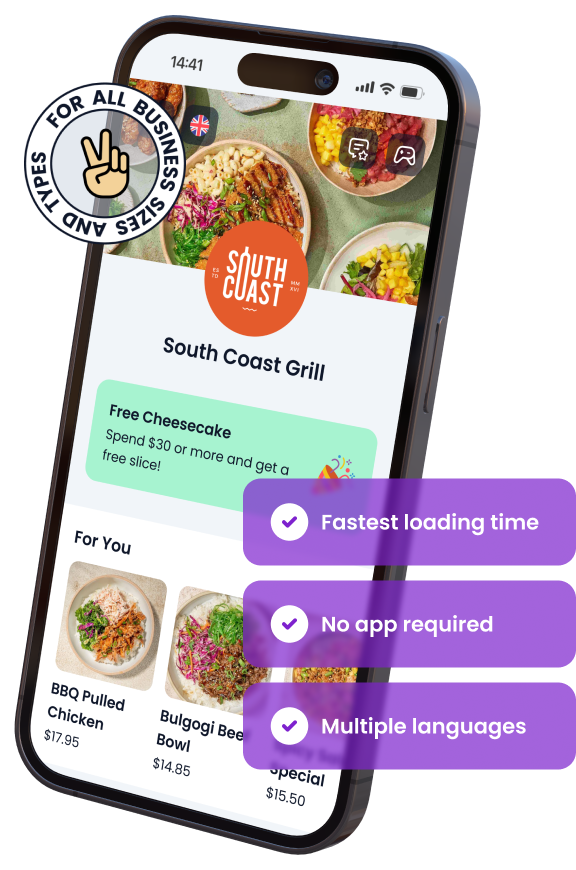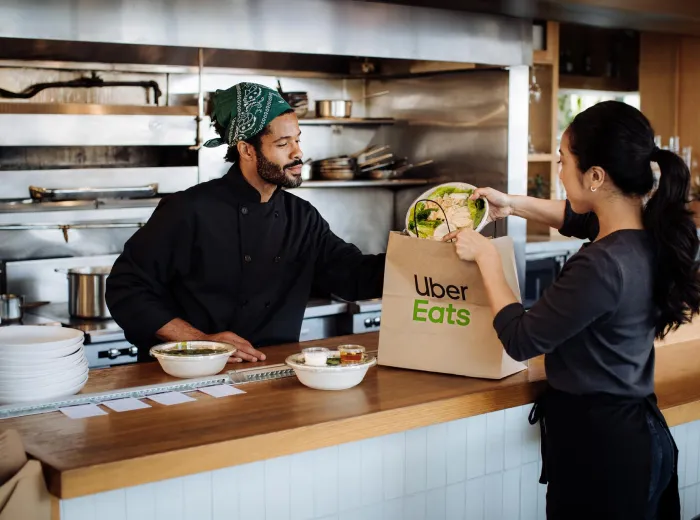

How to Open a Restaurant in 2025? Complete Guide & Tips
Opening a restaurant has always been a dream for many, but the path to turning that dream into reality is filled with challenges and complexities. In 2025, the restaurant industry is experiencing a unique blend of opportunities and hurdles, shaped by evolving consumer preferences, technological advancements, and the lingering effects of the global pandemic. The landscape is dynamic, requiring aspiring restaurateurs to be more informed and strategic than ever before.
This guide is designed to provide a comprehensive roadmap for anyone looking to open a restaurant in 2025. Whether you’re an experienced entrepreneur or a first-time business owner, understanding the nuances of this industry is crucial. From planning your concept and securing financing to navigating legal requirements and building a stellar team, each step of the process plays a vital role in your restaurant’s success.
As you embark on this journey, it’s essential to stay ahead of industry trends, anticipate potential challenges, and be prepared to adapt. This article will not only guide you through the practical aspects of opening a restaurant but also offer insights into the strategies that can help you thrive in this competitive field. By the end of this guide, you’ll have the knowledge and tools you need to turn your restaurant vision into a thriving reality.
Let’s dive in and explore what it takes to open a successful restaurant in 2025.
Would you like to listen our deep-dive conversation about this article?
Introduction to Opening a Restaurant in 2025
Opening a restaurant in 2025 presents a unique set of opportunities and challenges. The food and beverage industry has undergone significant transformations in recent years, driven by shifts in consumer behavior, technological advancements, and the aftermath of the global pandemic. These changes have redefined how restaurants operate, and understanding these dynamics is crucial for anyone looking to enter the industry.
One of the most notable shifts in 2025 is the growing importance of digital integration. From online ordering and delivery services to digital menus and contactless payments, technology is now a cornerstone of the dining experience. Customers expect convenience, speed, and a seamless online-offline experience. As a result, restaurants that embrace these digital trends are more likely to attract and retain customers, while those that resist may struggle to keep up.
Moreover, the pandemic has left a lasting impact on consumer expectations. Health and safety have become top priorities, with diners more conscious than ever about cleanliness, hygiene, and the overall safety of their dining environment. This has led to the rise of open kitchens, increased transparency in food sourcing, and the adoption of strict health protocols. Restaurateurs must be prepared to meet these heightened expectations while maintaining the quality and ambiance that customers crave.
Additionally, the competitive landscape in 2025 is fiercer than ever. The economic recovery has spurred a surge in new restaurant openings, making it essential for new entrants to stand out. This means having a well-defined concept, a clear target market, and a unique selling proposition (USP) that resonates with modern diners. Whether it’s offering plant-based menus, sustainable practices, or a one-of-a-kind dining experience, differentiation is key to capturing a loyal customer base.
In summary, opening a restaurant in 2025 requires a blend of traditional business acumen and a keen understanding of contemporary trends. Aspiring restaurateurs must be agile, innovative, and ready to navigate an industry that is constantly evolving. By staying informed and strategically planning each aspect of your restaurant, you can position yourself for success in this dynamic environment.
Planning Your Restaurant Concept
Planning your restaurant concept is one of the most crucial steps in opening a successful restaurant. Your concept is the foundation upon which every other aspect of your business is built, from the menu to the interior design to the marketing strategy. In 2025, having a well-thought-out and distinct concept is more important than ever, given the competitive nature of the restaurant industry. Here’s how to effectively plan your restaurant concept.
Defining Your Restaurant Concept
Your restaurant concept is the overall idea or theme that defines your business. It includes the type of cuisine you’ll serve, the style of service, the ambiance, and even the target demographic. To define your concept:
Identify Your Unique Selling Proposition (USP):
What makes your restaurant different from others? Your USP could be anything from a unique culinary style to an innovative dining experience. Ensure that your USP is clear, compelling, and resonates with your target market.
Choose the Right Cuisine and Theme:
Select a cuisine that aligns with your passion and expertise but also appeals to your target market. Consider whether you want to offer traditional, fusion, or niche cuisine. The theme should complement the cuisine and create a cohesive dining experience. For example, a farm-to-table concept might feature rustic decor and locally sourced ingredients.
Consider Service Style:
Decide whether your restaurant will be full-service, fast-casual, or quick service. Each style has different operational requirements and appeals to different customer bases. Make sure your service style aligns with your concept and customer expectations.
Target Market Analysis
Understanding your target market is essential for shaping your restaurant concept. A deep dive into who your potential customers are will guide your decisions on everything from menu design to marketing strategies.
Demographics:
Age, income level, occupation, and family status are key factors. For example, a fine dining restaurant might target affluent professionals, while a casual café might appeal to students and young professionals.
Psychographics:
Look beyond demographics to understand the lifestyle, values, and preferences of your target customers. Are they health-conscious? Do they prefer organic or sustainable options? Are they looking for a unique dining experience or quick, convenient meals?
Competitor Analysis:
Identify who your competitors are and what they offer. Consider what you can do differently or better. This could include menu variety, pricing, customer service, or ambiance.
Conducting Market Research
Market research is the process of gathering, analyzing, and interpreting information about your market. It provides the insights you need to ensure there is a demand for your restaurant and helps you fine-tune your concept.
Surveys and Focus Groups:
Conduct surveys or focus groups within your target market to understand their dining habits, preferences, and willingness to try new concepts. Use this data to validate your ideas and adjust your concept accordingly.
Location-Specific Research:
Investigate the area where you plan to open your restaurant. Analyze the local demographics, foot traffic, and the presence of other restaurants. A location with high foot traffic and minimal direct competition is ideal, but it’s also important that the area’s demographics align with your target market.
Industry Trends:
Stay informed about current trends in the restaurant industry. In 2025, trends such as sustainability, plant-based menus, and digital integration are becoming increasingly important. Incorporating these trends into your concept can help attract a broader audience.
Creating a Business Plan
A well-crafted business plan is essential for turning your restaurant concept into a reality. It not only serves as a roadmap for your business but is also crucial for securing financing.
Essential Components of a Business Plan:
- Executive Summary: A brief overview of your restaurant concept, target market, and financial projections.
- Company Description: Information about your restaurant’s ownership, mission statement, and business structure.
- Market Analysis: A detailed analysis of your target market, competitors, and industry trends.
- Marketing and Sales Strategy: Your approach to attracting and retaining customers, including branding, advertising, and promotions.
- Menu and Service Style: Detailed descriptions of your menu offerings, pricing strategy, and service model.
- Financial Projections: Revenue forecasts, expense estimates, and break-even analysis.
SWOT Analysis:
Conduct a SWOT analysis (Strengths, Weaknesses, Opportunities, Threats) to evaluate your restaurant’s potential. This helps identify internal strengths and weaknesses, as well as external opportunities and threats that could impact your business. Here’s a simple example:

In summary, planning your restaurant concept involves careful consideration of your unique value proposition, target market, and market dynamics. By conducting thorough research and developing a strong business plan, you set a solid foundation for your restaurant’s success in 2025.
Securing Financing for Your Restaurant
Securing adequate financing is one of the most critical steps in opening a restaurant. Whether you’re launching a small café or a full-service restaurant, having enough capital to cover initial startup costs and sustain operations during the early months is essential for long-term success. In 2025, with rising costs and an increasingly competitive market, understanding your financing options and managing your cash flow effectively are more important than ever.
Estimating Startup Costs
Before you can secure financing, you need a clear understanding of how much money you’ll need to open your restaurant. Startup costs can vary widely depending on the type, size, and location of your restaurant, but here are some key expenses to consider:
Lease or Purchase of Property:
Renting or buying a space will likely be one of your biggest expenses. Consider the cost per square foot, the required deposit, and any renovation or build-out costs.
Equipment and Supplies:
- Kitchen Equipment: Ovens, refrigerators, freezers, and other essential kitchen appliances.
- Furniture and Décor: Tables, chairs, lighting, and interior design elements.
- Smallwares: Utensils, dishes, glassware, and other small equipment.
Licensing and Permits:
Budget for health permits, food safety certifications, liquor licenses, and other necessary approvals from local authorities.
Marketing and Branding:
Initial costs for branding, website development, and marketing campaigns to create awareness before your grand opening.
Initial Inventory:
Stocking your kitchen with the necessary ingredients and beverages to start operations.
Working Capital:
Funds to cover day-to-day operational costs, including payroll, utilities, and supplies, until your restaurant starts generating sufficient revenue.
| Expense Category | Estimated Cost (Low-End) | Estimated Cost (High-End) |
|---|---|---|
| Lease or Purchase | $50,000 | $200,000 |
| Equipment and Supplies | $20,000 | $150,000 |
| Licensing and Permits | $2,000 | $10,000 |
| Marketing and Branding | $5,000 | $25,000 |
| Initial Inventory | $10,000 | $30,000 |
| Working Capital (6 months) | $30,000 | $100,000 |
Funding Options for New Restaurants
Once you’ve estimated your startup costs, the next step is to explore your financing options. There are several ways to fund your restaurant, each with its own advantages and drawbacks.
Traditional Bank Loans:
- Pros: Generally offer lower interest rates and longer repayment terms. Banks may provide larger loan amounts than alternative lenders.
- Cons: Often require strong credit scores, extensive documentation, and collateral. The approval process can be lengthy.
Small Business Administration (SBA) Loans:
- Pros: Government-backed loans with favorable terms for small businesses. They often have lower down payment requirements and longer repayment terms.
- Cons: The application process can be complex and time-consuming. SBA loans still require good credit and a solid business plan.
Private Investors:
- Pros: Investors can provide significant capital in exchange for equity in your restaurant. They may also offer valuable industry expertise and networking opportunities.
- Cons: Giving up equity means sharing ownership and potentially decision-making control. You may need to give up a portion of future profits.
Crowdfunding:
- Pros: Allows you to raise funds from a large number of small investors or supporters. Platforms like Kickstarter or Indiegogo can also help build a customer base before you open.
- Cons: Crowdfunding campaigns require significant effort in marketing and promoting. There’s no guarantee of success, and if you don’t reach your funding goal, you may not receive any money.
Government Grants and Incentives:
- Pros: Some local, state, or federal programs offer grants or incentives for small businesses, particularly in underserved areas or for those promoting sustainability.
- Cons: Grants are highly competitive and typically have strict eligibility requirements. They may also require detailed reporting on how funds are used.
Managing Cash Flow in the Early Months
Even with adequate startup capital, managing your cash flow during the first few months of operation is crucial. Cash flow problems are one of the leading causes of restaurant failures, so it’s important to plan carefully.
Monitor Expenses Closely:
Track all expenditures carefully and compare them against your budget. Identify any areas where you can cut costs without compromising quality.
Control Inventory:
Avoid over-purchasing inventory that could go to waste. Implement an inventory management system to track stock levels and adjust orders based on actual sales.
Optimize Labor Costs:
Schedule staff efficiently to match demand. Avoid overstaffing during slow periods and ensure that your payroll expenses align with your revenue.
Keep an Eye on Key Metrics:
- Break-Even Analysis: Calculate your break-even point to understand how much revenue you need to cover your costs.
- Profit Margins: Regularly review your profit margins to ensure you’re pricing your menu items correctly.
- Cash Flow Forecasting: Project your cash flow for the next 3-6 months to anticipate any shortfalls and adjust accordingly.
In summary, securing financing for your restaurant involves careful planning, understanding your funding options, and managing cash flow effectively. By estimating your startup costs accurately and choosing the right financing strategy, you can ensure that your restaurant has the financial foundation it needs to succeed in 2025.
Legal Requirements and Permits
Navigating the legal requirements and securing the necessary permits are critical steps in opening a restaurant. Failing to comply with regulations can result in hefty fines or even force you to shut down your operations. In 2025, as regulations evolve to meet new health and safety standards, it’s more important than ever to ensure that your restaurant is fully compliant from day one. This section will guide you through the key legal aspects you need to consider.
Understanding Restaurant Licensing
Before you can open your doors, you’ll need to obtain several licenses and permits that authorize you to operate a restaurant legally. The specific requirements vary depending on your location, but some common licenses include:
Food Service License:
- Issued by the local health department, this license certifies that your restaurant meets all necessary health and safety standards.
- Process: Submit an application, undergo a health inspection, and pay a fee.
- Renewal: Typically required annually, with periodic inspections to maintain compliance.
Liquor License:
- Required if you plan to serve alcohol. There are different types of liquor licenses depending on the type of alcohol you intend to serve (beer and wine only, full bar, etc.).
- Process: Apply through your state’s liquor control board, which may include background checks, a public hearing, and a significant fee.
- Waiting Period: Approval can take several months, so apply early in your planning process.
Sign Permit:
- If you plan to put up a sign for your restaurant, many municipalities require a sign permit. This ensures that your signage complies with local zoning laws and aesthetic guidelines.
- Considerations: Size, lighting, and placement of the sign will be evaluated.
Music License:
- If you plan to play copyrighted music in your restaurant, you’ll need to obtain a music license from a performing rights organization (PRO) like ASCAP, BMI, or SESAC.
- Cost: Typically based on your restaurant’s size and the type of music played.
Choosing the Right Legal Structure
Selecting the appropriate legal structure for your restaurant has important implications for your taxes, liability, and operational flexibility. Here are the most common legal structures for restaurants:
Sole Proprietorship:
- Pros: Simple to set up and operate, with minimal regulatory requirements.
- Cons: The owner is personally liable for all business debts and obligations.
Limited Liability Company (LLC):
- Pros: Offers liability protection for the owner(s) while allowing profits to pass through to personal income without corporate taxes.
- Cons: More complex and costly to set up than a sole proprietorship.
Corporation (C-Corp or S-Corp):
- Pros: Provides the most liability protection and can raise capital through the sale of stock. S-Corps allow profits to pass through to personal income, avoiding corporate tax.
- Cons: More regulatory requirements and double taxation for C-Corps (taxed at both corporate and personal levels).
Complying with Employment Laws
Hiring staff is a major step in opening your restaurant, and it comes with a host of legal responsibilities. You must comply with federal, state, and local employment laws to avoid legal issues and create a fair working environment.
Hiring and Labor Laws:
- Minimum Wage: Ensure that all employees are paid at least the minimum wage set by federal, state, and local laws.
- Overtime Pay: Non-exempt employees must receive overtime pay (usually 1.5 times their regular rate) for hours worked over 40 in a week.
- Anti-Discrimination Laws: Comply with laws prohibiting discrimination based on race, gender, age, disability, and other protected characteristics during hiring and employment.
Payroll and Benefits:
- Payroll Taxes: Withhold and pay federal, state, and local payroll taxes, including Social Security, Medicare, and unemployment taxes.
- Benefits Compliance: If you offer benefits such as health insurance, ensure that they comply with federal regulations like the Affordable Care Act (ACA).
Worker’s Compensation:
- Most states require you to provide worker’s compensation insurance, which covers medical expenses and lost wages for employees injured on the job.
In summary, ensuring that your restaurant meets all legal requirements and secures the necessary permits is a foundational step in your business journey. By understanding and adhering to these regulations, you can avoid legal pitfalls and focus on creating a successful and sustainable restaurant in 2025.
Finding the Perfect Location
Selecting the right location for your restaurant is one of the most important decisions you’ll make. The location can significantly impact your restaurant’s visibility, foot traffic, and ultimately, its success. In 2025, with the increasing importance of convenience and accessibility, choosing a strategic location is more crucial than ever. This section will guide you through the key considerations when finding the perfect spot for your restaurant.
Location Considerations
When choosing a location, several factors come into play. Each of these can influence your restaurant’s success in different ways:
Foot Traffic:
- High-Traffic Areas: Locations near shopping centers, business districts, or popular attractions can offer a steady flow of potential customers. These areas often come with higher rent but can be worth the investment due to increased visibility.
- Destination Spots: Alternatively, some restaurants thrive as destination spots where customers are willing to travel for a unique dining experience. These locations may not have high foot traffic but can build a loyal customer base through targeted marketing.
Accessibility and Parking:
- Ensure that your restaurant is easily accessible by car, public transportation, or on foot. Ample parking or proximity to public parking can be a deciding factor for many customers.
- Consideration for Special Needs: Make sure the location complies with accessibility standards for people with disabilities, including entrance ramps and accessible restrooms.
Proximity to Competitors:
- Analyze the nearby competition. Being close to other successful restaurants can attract more diners to the area, but you’ll need to differentiate your concept to stand out. Conversely, a location with little or no competition might suggest an underserved market or a challenging environment.
Neighborhood Demographics:
- Understand the demographics of the neighborhood. Consider factors like age, income levels, and lifestyle preferences. For example, a high-end fine dining restaurant would be more successful in an affluent area, while a casual café might thrive in a trendy, youthful neighborhood.
Leasing vs. Buying Your Space
Once you’ve identified potential locations, you’ll need to decide whether to lease or buy the property. Each option has its advantages and disadvantages:
Leasing:
- Pros:
- Lower initial investment compared to buying.
- Flexibility to relocate if the location doesn’t perform well.
- Maintenance and repairs may be the landlord’s responsibility.
- Cons:
- Monthly rent payments add to ongoing costs.
- Lease terms may limit how you can modify the space.
- Potential for rent increases or lease termination by the landlord.
Buying:
- Pros:
- Long-term investment that can appreciate over time.
- Full control over the property, allowing for significant renovations and customization.
- Potential to lease out part of the space to generate additional income.
- Cons:
- High upfront costs, including down payment, mortgage, and property taxes.
- Responsibility for all maintenance, repairs, and property management.
- Limited flexibility to relocate if the business needs change.
Designing Your Restaurant Layout
The interior layout of your restaurant should be both functional and inviting, balancing the needs of your staff and customers:
Flow and Efficiency:
Ensure that the kitchen, storage, and dining areas are designed to maximize efficiency. A well-planned layout reduces wait times, improves service, and enhances the overall customer experience.
Seating Capacity:
Optimize the seating arrangement to accommodate as many guests as possible without compromising comfort. Consider a mix of seating options, including tables, booths, and bar seating.
Aesthetics and Ambiance:
The design should reflect your restaurant’s concept and brand identity. Whether it’s a cozy, rustic vibe or a sleek, modern look, the decor and ambiance play a key role in attracting and retaining customers.
Compliance with Regulations:
Ensure your layout meets local building codes, health regulations, and accessibility standards. This includes proper spacing between tables, fire exits, and restroom accessibility.
Finding the perfect location for your restaurant involves a careful balance of visibility, accessibility, and financial considerations. By thoroughly evaluating these factors and choosing the right space, you can set your restaurant up for long-term success in 2025.
Building Your Restaurant Team
Assembling a skilled and motivated team is essential to the success of your restaurant. In 2025, the hospitality industry continues to face challenges in recruiting and retaining top talent, making it more important than ever to build a strong, cohesive team. Your staff will be the face of your restaurant and play a crucial role in creating a memorable dining experience for your customers. This section will guide you through the key steps in building your restaurant team.
Key Roles You Need to Fill
Before you start hiring, it’s important to understand the key positions that are critical to your restaurant’s operations. Each role requires specific skills and contributes to the overall success of your business.
Executive Chef or Head Chef:
- Responsibilities: Oversees the kitchen, designs the menu, manages food preparation, and ensures quality control.
- Key Qualities: Creativity, leadership, and experience in kitchen management.
Sous Chef:
- Responsibilities: Assists the head chef, manages the kitchen staff, and oversees day-to-day food preparation.
- Key Qualities: Strong culinary skills, attention to detail, and ability to work under pressure.
Front-of-House (FOH) Manager:
- Responsibilities: Manages the dining area, ensures excellent customer service, and handles reservations and complaints.
- Key Qualities: Excellent communication, problem-solving skills, and a focus on customer satisfaction.
Waitstaff:
- Responsibilities: Takes orders, serves food and drinks, and provides customer service.
- Key Qualities: Friendly demeanor, efficiency, and good communication skills.
Bartender:
- Responsibilities: Prepares and serves drinks, manages bar inventory, and engages with customers.
- Key Qualities: Knowledge of mixology, customer service skills, and ability to multitask.
Dishwasher:
- Responsibilities: Cleans dishes, utensils, and kitchen equipment.
- Key Qualities: Efficiency, reliability, and ability to work in a fast-paced environment.
| Position | Key Responsibilities | Essential Qualities |
|---|---|---|
| Executive Chef | Menu design, kitchen management, food quality | Creativity, leadership, experience |
| Sous Chef | Assists head chef, manages kitchen staff | Culinary skills, attention to detail |
| FOH Manager | Manages dining area, customer service | Communication, problem-solving |
| Waitstaff | Takes orders, serves food, customer interaction | Friendly, efficient, communicative |
| Bartender | Prepares drinks, manages bar, customer engagement | Mixology knowledge, multitasking |
| Dishwasher | Cleans dishes, supports kitchen staff | Efficiency, reliability |
Creating a Positive Work Culture
A positive work culture not only attracts top talent but also helps retain your employees, reducing turnover and its associated costs. Here’s how you can foster a great work environment:
Provide Comprehensive Training:
- Invest in training programs to ensure that all staff members understand their roles and responsibilities. This includes customer service training for front-of-house staff and food safety training for kitchen staff.
Encourage Team Collaboration:
- Promote a team-oriented culture where staff members support one another. This can be encouraged through regular team meetings, collaborative problem-solving sessions, and social events outside of work.
Offer Competitive Compensation:
- Ensure that your wages and benefits are competitive within the industry. Consider offering additional perks such as employee discounts, health benefits, or performance-based bonuses to retain top talent.
Recognize and Reward Excellence:
- Acknowledge your employees’ hard work and dedication through regular feedback, employee of the month programs, or other forms of recognition. Positive reinforcement can boost morale and motivate your team to perform at their best.
Managing Staffing Costs
Managing staffing costs is crucial for maintaining profitability while ensuring that your restaurant is adequately staffed to provide excellent service.
Labor Cost Control:
- Monitor labor costs as a percentage of sales. A common target is to keep labor costs between 20-30% of total sales. Adjust staffing levels based on demand, scheduling more staff during peak hours and fewer during slower periods.
Use Technology for Efficiency:
- Implement scheduling software to optimize shift planning, reduce overtime, and ensure adequate coverage during busy times. This can help minimize labor costs while maintaining high service standards.
Cross-Training Staff:
- Cross-train employees to handle multiple roles. For example, a server could be trained to assist with bartending during busy periods. This increases flexibility and reduces the need for additional hires.
Building a strong restaurant team requires careful planning, a positive work culture, and effective cost management. By focusing on these areas, you can create a team that not only excels in their roles but also contributes to the overall success of your restaurant in 2025.
Menu Development and Pricing
The menu is the heart of your restaurant, reflecting your concept, brand identity, and culinary vision. Effective menu development and strategic pricing are crucial for attracting customers, driving sales, and ensuring profitability. In 2025, with consumers increasingly focused on value, quality, and unique dining experiences, crafting a well-balanced menu with competitive pricing is more important than ever. This section will guide you through the key elements of menu development and pricing.
Crafting a Menu That Sells
Creating a menu that not only appeals to your target audience but also maximizes profitability requires careful consideration of several factors:
Balance and Variety:
- Offer a diverse range of dishes that cater to different tastes and dietary preferences. Include a mix of appetizers, entrees, and desserts, with options for vegetarians, vegans, and those with dietary restrictions.
- Menu Sections: Clearly defined sections (e.g., Starters, Mains, Desserts) help guide customers through their dining choices.
Highlighting Signature Dishes:
- Feature your most unique and profitable dishes as “Chef’s Specials” or with a distinct label on the menu. This draws attention to what sets your restaurant apart and encourages customers to try something new.
Seasonal and Local Ingredients:
- Incorporate seasonal and locally sourced ingredients to enhance freshness and appeal. Not only does this align with sustainability trends, but it also allows for menu updates that keep your offerings exciting.
Menu Design:
- Use a clean, easy-to-read layout with visually appealing fonts and colors that align with your brand identity. Avoid cluttering the menu with too many options, as this can overwhelm customers.
Setting the Right Price Points
Pricing your menu items correctly is essential for balancing customer expectations with your restaurant’s financial needs. Consider the following strategies:
Cost-Based Pricing:
Calculate the cost of each dish, including ingredients, labor, and overhead, to determine a baseline price. A common rule of thumb is to set menu prices at three times the cost of the dish to achieve a desirable profit margin.
Competitive Pricing:
Research the pricing of similar dishes at local competitors. Position your prices within a comparable range to attract cost-conscious customers, but don’t undercut your prices to the point where it negatively impacts profitability.
Psychological Pricing:
Use pricing strategies such as ending prices in .99 or .95 (e.g., $9.99 instead of $10.00) to make items appear more affordable. Consider offering combo meals or prix fixe menus to provide perceived value.
Dynamic Pricing:
Adjust prices based on demand and seasonality. For instance, you might offer lower prices or special promotions during off-peak times to encourage more traffic.
Maximizing Profitability
Once you’ve set your prices, it’s important to continuously monitor and adjust your menu to maintain profitability:
Regular Cost Analysis:
Periodically review ingredient costs and adjust prices accordingly to maintain margins. Rising costs of goods should be reflected in your menu prices to avoid eroding profits.
Menu Engineering:
Analyze sales data to identify your best-selling and most profitable items. Use this information to redesign your menu, featuring high-margin items more prominently while considering the removal or repositioning of low-margin or unpopular dishes.
Upselling and Cross-Selling:
Train your staff to suggest additional items such as appetizers, sides, or drinks that complement main courses. This can significantly increase the average check size and boost overall revenue.
By thoughtfully developing your menu and strategically setting prices, you can create a dining experience that satisfies customers while ensuring the financial health of your restaurant. In 2025, focusing on quality, variety, and value will help you stand out in a competitive market and drive long-term success.
Marketing Your Restaurant
Effective marketing is essential for attracting customers and building a loyal clientele in the competitive restaurant industry. In 2025, a well-rounded marketing strategy that combines traditional methods with digital tactics is crucial for reaching your target audience and driving business growth. This section will explore the key elements of marketing your restaurant, from building a strong brand identity to leveraging digital platforms.
Building Your Brand Identity
Your restaurant’s brand identity is more than just a logo or a name; it encompasses the entire experience you offer to your customers. A strong brand identity helps differentiate your restaurant in a crowded market and fosters customer loyalty.
Define Your Brand Values:
Identify what your restaurant stands for, whether it’s sustainability, authenticity, or exceptional customer service. These values should be reflected in every aspect of your business, from the menu to the decor to the way you interact with customers.
Create a Memorable Logo and Visual Identity:
Your logo, color scheme, and typography should be visually appealing and consistent across all marketing materials. Work with a professional designer to create a cohesive visual identity that resonates with your target audience.
Consistent Messaging:
Develop a brand voice that aligns with your concept and appeals to your customers. Whether your tone is casual and friendly or formal and sophisticated, ensure that it is consistent across all communication channels, including social media, your website, and in-person interactions.
Developing a Marketing Strategy
A well-planned marketing strategy is crucial for promoting your restaurant and attracting customers. Consider a mix of traditional and digital marketing tactics to maximize your reach.llamcorper mattis, pulvinar dapibus leo.
Traditional Marketing:
- Flyers and Posters: Distribute flyers and posters in your local community to raise awareness about your restaurant, especially during the grand opening. Include special offers or discounts to entice potential customers.
- Local Media: Advertise in local newspapers, magazines, or radio stations to reach a broader audience. Consider writing a press release to announce your restaurant’s opening and any unique offerings.
Digital Marketing:
- Social Media: Leverage platforms like Instagram, Facebook, and TikTok to showcase your menu, share behind-the-scenes content, and engage with customers. Regular posting and interaction with followers can help build a loyal online community.
- Email Marketing: Build an email list and send out regular newsletters featuring promotions, new menu items, and upcoming events. Email marketing is a cost-effective way to keep your restaurant top-of-mind for customers.
- Search Engine Optimization (SEO): Optimize your website for search engines by using relevant keywords, creating high-quality content, and ensuring your site is mobile-friendly. This will help improve your visibility on Google and attract more organic traffic.
Leveraging Online Reviews and Reputation Management
In 2025, online reviews play a significant role in a restaurant’s success. Positive reviews can drive new customers to your door, while negative reviews can deter potential diners. Managing your online reputation is crucial.
Encourage Positive Reviews:
Ask satisfied customers to leave reviews on platforms like Google, Yelp, and TripAdvisor. Consider offering incentives, such as a discount on their next visit, for leaving a review.
Respond to Reviews:
Engage with all reviews, both positive and negative. Thank customers for positive feedback and address any issues raised in negative reviews professionally and promptly. This shows potential customers that you value their feedback and are committed to providing a great experience.
Monitor Your Online Presence:
Regularly check review sites and social media for mentions of your restaurant. Use tools like Google Alerts to stay informed about what’s being said online. Address any issues quickly to prevent them from escalating.
| Review Platform | Action | Frequency |
|---|---|---|
| Respond to reviews, monitor mentions | Daily | |
| Yelp | Encourage reviews, respond promptly | Daily |
| TripAdvisor | Monitor feedback, thank reviewers | Weekly |
| Social Media | Engage with mentions, address concerns | Daily |
Planning a Grand Opening Event
Your grand opening is your first big opportunity to make a splash and attract customers. A well-planned event can generate buzz and set the tone for your restaurant’s success.
Create Pre-Opening Hype:
Use social media and email marketing to build anticipation for your grand opening. Share sneak peeks of your menu, behind-the-scenes content, and special offers for the first customers through the door.
Offer Special Promotions:
Consider offering a limited-time discount, free appetizers, or a special menu item during the grand opening to encourage attendance and create excitement.
Partner with Local Influencers:
Invite local food bloggers, influencers, and media to your grand opening. Their coverage can help spread the word and attract a broader audience.
By developing a strong brand identity, implementing a comprehensive marketing strategy, and effectively managing your online reputation, you can successfully attract and retain customers. In 2025, a balanced approach that combines traditional and digital marketing tactics will position your restaurant for long-term success.
Day-to-Day Operations
Managing the day-to-day operations of your restaurant is crucial for ensuring smooth service, maintaining quality, and achieving long-term success. In 2025, with rising customer expectations and the integration of technology into every aspect of the dining experience, it’s essential to have efficient systems in place to handle the daily demands of running a restaurant. This section covers the key elements of daily operations, from system setup to customer service and quality control.
Setting Up Efficient Systems
Efficiency is the backbone of successful restaurant operations. Implementing the right systems and tools can streamline processes, reduce errors, and enhance the overall customer experience.
Point of Sale (POS) System:
- A robust POS system is essential for managing orders, processing payments, and tracking sales. Modern POS systems also integrate with inventory management, customer loyalty programs, and online ordering platforms.
- Key Features to Consider:
- User-friendly interface
- Real-time inventory tracking
- Detailed sales reporting
- Mobile compatibility for tableside service
Inventory Management:
- Effective inventory management helps prevent overstocking, reduces waste, and ensures that you always have the necessary ingredients on hand. Use inventory management software that integrates with your POS system for real-time updates.
- Best Practices:
- Conduct regular inventory checks
- Monitor usage patterns and adjust orders accordingly
- Establish par levels for key ingredients
Staff Scheduling:
- Efficient staff scheduling ensures that you have the right number of employees on duty during peak and off-peak hours. Use scheduling software to create and adjust shifts based on historical data and projected demand.
- Tips for Effective Scheduling:
- Rotate shifts to avoid burnout
- Consider employee preferences when assigning shifts
- Monitor labor costs and adjust staffing levels as needed
Managing Customer Service
Customer service is at the heart of your restaurant’s success. Providing exceptional service can turn first-time visitors into loyal customers and generate positive word-of-mouth.
Staff Training:
- Ensure that all staff members are well-trained in customer service best practices. This includes greeting customers warmly, being attentive to their needs, and handling any issues promptly and professionally.
- Focus Areas:
- Communication skills
- Problem-solving and conflict resolution
- Product knowledge and upselling techniques
Handling Complaints:
- No matter how well you train your staff, complaints will happen. How you handle them can make the difference between losing a customer and turning a negative experience into a positive one.
- Steps to Handle Complaints:
- Listen actively and acknowledge the issue
- Apologize sincerely, even if the complaint seems minor
- Offer a solution, such as a replacement dish or a discount on the bill
- Follow up with the customer to ensure satisfaction
Maintaining Consistent Quality
Consistency is key in the restaurant industry. Customers expect the same high-quality food and service every time they visit, and maintaining these standards requires regular monitoring and adjustments.
Regular Staff Evaluations:
- Conduct regular performance evaluations to ensure that staff members are meeting expectations. Provide constructive feedback and offer additional training if needed.
- Evaluation Criteria:
- Adherence to service protocols
- Ability to work as part of a team
- Customer feedback and satisfaction
Ensuring Food Safety and Cleanliness:
- Strict adherence to food safety standards is essential for preventing foodborne illnesses and maintaining a clean, welcoming environment.
- Key Practices:
- Implement a daily cleaning schedule for the kitchen and dining areas
- Conduct regular health and safety inspections
- Ensure all staff are trained in food handling and hygiene practices
By setting up efficient systems, focusing on exceptional customer service, and maintaining consistent quality, you can ensure the smooth operation of your restaurant on a daily basis. These elements are critical for meeting customer expectations, reducing operational challenges, and positioning your restaurant for long-term success in 2025.
Financial Management and Growth Strategies
Effective financial management is crucial for the sustainability and growth of your restaurant. In 2025, with increasing costs and a competitive market, it’s essential to not only manage your finances meticulously but also to plan for future growth. This section will guide you through the key aspects of financial management and outline strategies for scaling your restaurant business.
Ongoing Financial Monitoring
Regular financial monitoring helps you keep a close eye on your restaurant’s performance and ensures that you are on track to meet your financial goals. Here are some critical areas to focus on:
Regular Financial Statements Review:
- Review your income statement, balance sheet, and cash flow statement monthly. These documents provide a snapshot of your restaurant’s financial health and help identify areas that need improvement.
- Key Metrics to Track:
- Gross Profit Margin: Indicates the profitability of your core operations. Aim for a gross profit margin of 60-70%.
- Net Profit Margin: Reflects your overall profitability after all expenses. A net profit margin of 5-10% is typical for the restaurant industry.
- Current Ratio: Measures your ability to pay short-term obligations. A ratio above 1 indicates good liquidity.
Cost Control:
- Keep a tight rein on costs, particularly food and labor, which are the largest expenses for most restaurants. Regularly compare actual costs against your budget to identify and address variances.
- Tips for Cost Control:
- Negotiate with suppliers for better pricing or bulk discounts.
- Reduce waste by implementing portion control and tracking inventory closely.
- Optimize staffing levels based on customer demand to reduce overtime and unnecessary labor costs.
Controlling Costs and Maximizing Profit
To maximize your restaurant’s profitability, you must effectively control costs while ensuring that you deliver high-quality food and service. Here’s how:
Food Cost Management:
- Menu Engineering: Analyze the profitability and popularity of each menu item. Focus on promoting high-margin dishes and consider adjusting or removing low-margin items.
- Supplier Management: Build strong relationships with suppliers and regularly review contracts to ensure you’re getting the best prices. Consider sourcing locally to reduce transportation costs and support local businesses.
Labor Cost Management:
- Efficient Scheduling: Use labor management software to create optimized schedules that align with customer demand. Avoid overstaffing during slow periods and adjust shifts as needed to minimize labor costs.
- Cross-Training Employees: Train staff to handle multiple roles, which can reduce the need for additional hires and increase flexibility during peak times.
Increasing Average Check Size:
- Upselling and Cross-Selling: Train your staff to suggest add-ons, such as appetizers, desserts, and beverages, to increase the average check size. Implementing special promotions, like a prix fixe menu, can also encourage customers to spend more.
Scaling Your Restaurant Business
Once your restaurant is running smoothly and generating consistent profits, you may consider expanding your business. Here are some growth strategies to consider:
Opening Additional Locations:
- Market Research: Before opening a new location, conduct thorough market research to identify areas with high demand and low competition. Consider demographic factors, foot traffic, and local dining trends.
- Replicating Success: Ensure that your second location replicates the success of your first by maintaining consistency in food quality, service, and ambiance. Develop standardized operating procedures to streamline the expansion process.
Franchising Your Restaurant:
- Franchise Model: If your restaurant concept is unique and scalable, franchising can be an effective way to grow. Develop a comprehensive franchise model that includes training programs, marketing support, and operational guidelines for franchisees.
- Legal Considerations: Work with a franchise attorney to ensure compliance with franchising laws and to protect your brand and intellectual property.
Diversifying Revenue Streams:
- Catering Services: Offering catering for events can provide an additional revenue stream and help promote your restaurant to a broader audience.
- Retail Products: Consider selling branded merchandise or packaged versions of your signature dishes and sauces. This not only generates additional income but also helps build brand loyalty.
Adapting to Market Changes
The restaurant industry is constantly evolving, and staying ahead of market changes is key to long-term success. Here’s how to remain adaptable:
Staying Current with Trends:
Regularly update your menu to reflect current dining trends, such as plant-based options, sustainability practices, and healthy eating. Incorporate customer feedback to ensure your offerings remain relevant and appealing.
Technology Adoption:
Leverage technology to improve efficiency and enhance the customer experience. This could include adopting online ordering systems, integrating customer relationship management (CRM) tools, or using data analytics to inform decision-making.
Continuous Improvement:
Regularly evaluate your restaurant’s performance and seek out areas for improvement. This might involve adjusting your pricing strategy, refining your marketing efforts, or optimizing your supply chain.
By focusing on financial management and growth strategies, you can ensure the long-term success and profitability of your restaurant. Careful monitoring of your financial health, strategic cost control, and a clear plan for growth will position your restaurant to thrive in 2025 and beyond.
Conclusion
Opening and running a successful restaurant in 2025 requires careful planning, strategic thinking, and a commitment to excellence. The journey from concept to operation is filled with challenges, but with the right approach, it’s possible to build a thriving business that stands the test of time. This conclusion will recap the key points covered in this guide and offer final tips for aspiring restaurateurs.
Recap of Key Steps
To ensure that your restaurant is set up for success, remember these critical steps:
Planning Your Restaurant Concept:
- Define your unique selling proposition (USP) and target market.
- Conduct thorough market research and develop a comprehensive business plan.
Securing Financing:
- Accurately estimate startup costs and explore various funding options.
- Manage cash flow carefully during the initial months of operation.
Navigating Legal Requirements:
- Obtain all necessary licenses and permits, and choose the right legal structure.
- Ensure compliance with employment laws and food safety regulations.
Finding the Perfect Location:
- Consider factors like foot traffic, accessibility, and neighborhood demographics.
- Decide whether to lease or buy your space and design a functional, appealing layout.
Building Your Restaurant Team:
- Hire skilled staff for key roles and foster a positive work culture.
- Manage staffing costs efficiently and ensure proper training.
Menu Development and Pricing:
- Create a balanced menu that appeals to your target audience and maximizes profitability.
- Implement strategic pricing to balance customer value with business needs.
Marketing Your Restaurant:
- Build a strong brand identity and develop a comprehensive marketing strategy.
- Leverage online reviews and reputation management to attract and retain customers.
Managing Day-to-Day Operations:
- Set up efficient systems for POS, inventory, and staff scheduling.
- Maintain high standards of customer service and food quality.
Financial Management and Growth:
- Monitor financial performance regularly and control costs effectively.
- Plan for future growth by exploring new locations, franchising, or diversifying revenue streams.
Final Tips for Aspiring Restaurateurs
As you embark on your journey to open a restaurant, keep these final tips in mind:
Stay Flexible and Adaptable:
The restaurant industry is constantly evolving. Be ready to adapt to new trends, customer preferences, and market conditions.
Prioritize Customer Experience:
Your customers are your most valuable asset. Invest in creating a memorable dining experience that keeps them coming back.
Focus on Quality:
Never compromise on the quality of your food, service, or ambiance. Consistency in these areas is key to building a loyal customer base.
Build Strong Relationships:
Cultivate relationships with your suppliers, employees, and customers. Strong relationships are the foundation of a successful restaurant.
Keep Learning and Improving:
The most successful restaurateurs are those who continuously seek to learn and improve. Attend industry conferences, network with peers, and stay informed about the latest trends and best practices.
By following these steps and keeping these tips in mind, you can navigate the challenges of opening a restaurant and set yourself up for long-term success. Remember, the journey may be challenging, but with dedication, passion, and careful planning, you can create a restaurant that thrives in 2025 and beyond.
ABOUT THE AUTHOR
Erkin Coban
Your Customers Deserve The Best
And we got Menuviel for them.
The fastest and easy-to-use online QR menu with 12+ unique features. Choose Menuviel and elevate your service quality to the next level.
Use free for the first 30 days.

In This Article

Free AI Tools for Restaurants
TRY NOW ➜

Feature your must-try items for quick visibility
Pin your selected items to the top of your menu. Perfect for bestsellers, new arrivals, or chef’s picks.








